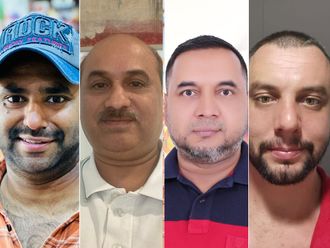_resources1_16a31069ffd_medium.jpg)
Highlights
- Two women entered the temple on Wednesday.
- Modi says entry of women in Sabarimala is not attributable to the constitution; it's about traditions.
- The Supreme Court is to start hearing a legal challenge to its ruling on January 22.
Equality is about the freedom of mind and respecting people’s beliefs
Shreeja Nair, Staff Writer
I am a devotee of Sri Ayappan, and Sabarimala has always held immense importance for my family and me.
Growing up in a traditional Hindu family from Kerala, I had a childhood steeped in customs. It was done to keep us grounded and close to our roots. As part of that were also ancient religious practices – a menstruating woman would not go to any temple. In fact, you would not even go near the small shrine with the residing deity found in most Hindu homes.

As the court has ordered that all women of all ages can enter, I would have gone, but only if there was no political strife surrounding it.
So, it is not specific to Sabarimala. However, we were told that the Sri Ayappan deity at Sabarimala was a celibate form, and we had to respect that. Additionally, you do have Hindu places of worship where men are not allowed in.
Going back, did I question these beliefs? No. But, this had more to do with the traditional upbringing, wherein questioning your parents was not an option that we thought of. It was deep conditioning.
Then there came a phase of my life, for personal reasons, that I questioned my entire belief system in the divine. Eventually I found my answers and my way to God, but as part of that evolutionary process some of this conditioning fell by the wayside. I moved past them, which brings me to today and the ongoing debate surrounding Sabarimala.
As the court has ordered that all women of all ages can enter, I would have gone, but only if there was no political strife surrounding it.
Today, it is no longer a question about your faith, but has become a political platform to build a vote bank. Politicians are exploiting religion.
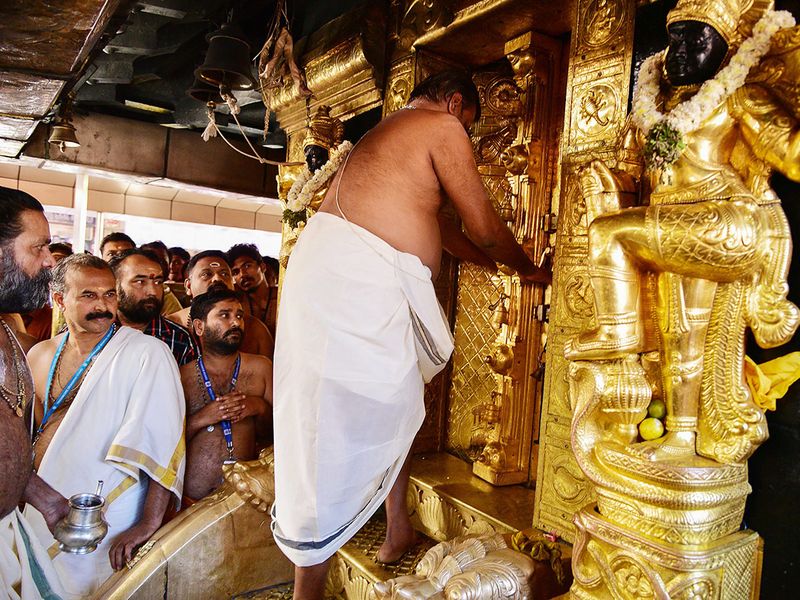
Additionally, many women believe that this is an opportunity to push for equality. Equality is about the freedom of mind and respecting people’s beliefs – changing them with patience and dialogue.
I do not think battling it out in Sri Ayappan’s courtyard is the way forward.
There are more pressing women's issues that need attention: Supria
(As told to Karishma H Nandkeolyar, Web News Editor)
My take on Sabarimala is that it's not an issue of patriarchy. It's a statement made by feminists across India…which I get - it's one of the tangible areas in which legal amendments would help - but I don't necessarily condone the force with which it has been implemented, because it's short-sighted and may not have the effects we want it to have.
Although I'm a woman, especially one for abolishing arbitrary patriarchal systems, I believe the Sabarimala custom is more about a tradition that's been followed since ages than it is about an archaic rule favouring males; just like there are temples in India exclusively for women...we wouldn't call them matriarchal, would we? There are way more pressing women's issues that need tackling and the amount of attention this particular issue is getting is not warranted in today's world. Rapes are still happening, male privilege still continues to pervade, and women are still not paid equal wages at the workplace and are still dominating softer and more female-oriented professions as compared to the STEM (Science, technology, engineering, and mathematics) fields. It's going to be a long time until relevant changes make themselves known to us as a society. What are we fighting really here? People seem to be misled about that.
If you can’t abide by the rules, don’t go there: Anju
(As told to Karishma H Nandkeolyar, Web News Editor)
It’s about tradition and custom. Impurity or lack thereof does not figure into it, says Anju. She rebuffs the idea that equality plays a role in the debate. “In order to bring equality there are other things that have to be taken care of. We have to bring equality in terms of jobs, worker equality, education…but in worshipping a deity, how is this equality coming up? I don’t understand,” she says.
She says there is a fundamental difference in the way people in Kerala worship and the relationship everyone else in India has with their temple. “In Kerala [what] I find is how we worship, how we keep the customs and traditions associated with the temple is different from the rest of India. In North India, if you go, you are permitted to enter up to where the deity sits (pedestal). The priest there touches you; when you do the puja, they put the tilak on you, they place their hands on your head when they recite the mantra, so that’s how the worshipping is done there. But if you see the temples in Kerala, you don’t touch the priest – you just give way to them,” she says. The respect comes from a distance; it comes from not ‘disturbing their aura’. “During this worshipping hours if you touch them, they have to go take a bath. That’s how we keep things. When you touch them, the aura breaks – it doesn’t matter whether you are man or woman – the damage is done.”
Anju adds that the way the way these ‘keep-out-of-holy-places’ traditions came about was practicality. “10-15 years ago, women had no time to rest at all – she used to do everything – from 4am to 10-11pm, whenever she is going to bed she has no rest. So when this custom was there – ‘[she’s not allowed to touch anything’, not ‘allowed to go anywhere’ she was getting proper food on time, rest.”
Now, in the name of equality, sometimes a woman’s only break at home is stripped away.
At the end of the day, she sighs, “Every temple has some rules, when you go, follow those rules. If you cannot abide by the rule then don’t go there.”
"I was made to sit separately and could not touch anyone"
Anjana Kumar, Staff Writer
Today was a rather puzzling day for me. The news of two women in their 40s entering the sanctum sanctorum of the Sabarimala temple and the shrine subsequently closing down for an hour to “purify” the temple sent a flood of memories.
They were memories of customs and traditions and my own personal struggle to break the shackles ingrained in me while growing up in a traditional South Indian Brahmin household.
I belong to a Brahmin family from the south of India. My family is Vaishnavite and we are followers of Vishnu. Vaishnavism believes in the supremacy of Lord Vishnu over all other Hindu deities. Shaivism on the other hand, believes in the power of Lord Shiva. This is one of the main differences between the two religious sects. I am a Madhwa, the highest sub-caste in the Brahmin lineage and there is much pride that comes with belonging to this sect.
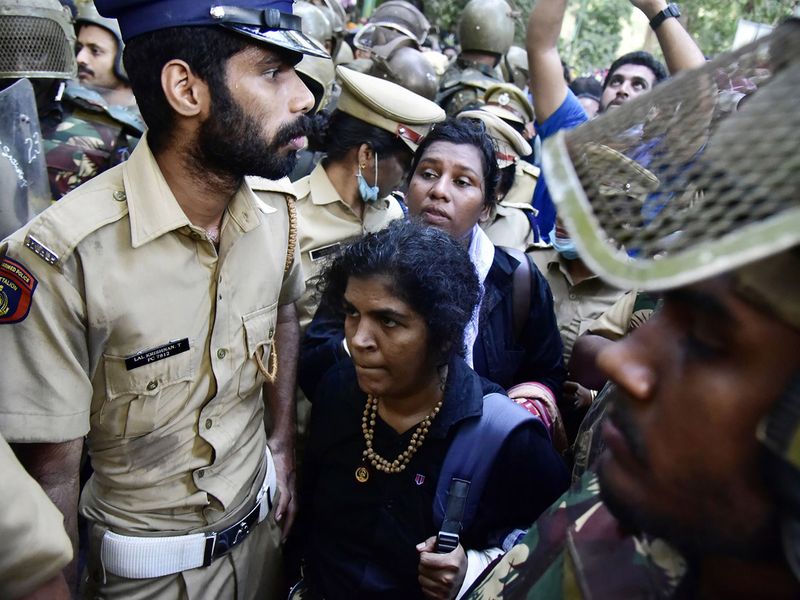
But when you look at me (I don’t say it with conceit and with all due respect to my sistren), I don’t resemble a traditional South Indian woman. If you are thinking why is this even important, for the record, back home in India, we lay a lot of emphasis on looks, the way you dress, what your religion is and what caste and sub-caste you belong to. You are perceived different if you don’t follow the norm and traditions. People can sadly type-caste you based on these factors as it is a way for them to decide if you make the cut as a friend, business partner, a revered follower of a religious practice and worse sometimes even for a life partner.
But while I may not look like a South Indian, get to know me a bit and you will be pleasantly shocked with some of my traditional (some may even call it archaic) belief systems – many of which were dealt to me as a child.
During one of my holiday visits to a grand aunt’s house in Chennai, I came head on with an ugly side to my belief system.
I was 13 and had just become an “adult”.
And during this visit, I was in for a rude shock to say the least. It was customary - and I did not know about this until that day - to inform my grand aunt if a lady visiting her is on her period. Out of respect – in India we care a lot about family and our relatives - my mother faithfully informed her that I was on my period.
The next four hours I spent in the house was hell to say the least. I was treated like an out-caste right from the moment I entered the house. I was made to sit separately and could not touch anyone. If I did touch someone by mistake, they would go to the washroom to clean their hands and feet. I could not sit or stand next to her or anyone and was not allowed to touch her feet and seek her blessings – a customary tradition we follow when we meet her as she is a revered family member.

Lunch was served to the entire family in a fancy silver plate. Poor me, for I was handed an old aluminum plate and tumbler which was kept aside in the kitchen for all menstruating women in the house.
After eating, I had to wash the plate myself, maneuver myself out of the kitchen just so I didn’t touch anyone.
I can tell you I barely ate and when I walked out of the kitchen I had tears rolling down my cheeks. I cried like a baby and told my mother I will never meet the old lady in my entire life. From a respected aunt, she had turned a witch to me. It also set me thinking about our values and traditions and why they were so discriminatory.
So why was this happening?
In traditional South-Indian Brahmin households, women who are menstruating are considered to be impure. Their vibrations, according to traditional belief systems, do not resonate with the lord and they have to be kept separate. This may have changed a lot now, but every time I hear of similar horror stories being practiced in some houses even today in India, I am not shocked.
I have to say my parents were global in their outlook. My father was a senior banker who travelled all over India. He had a mix of traditional and modern values.
In fact my earliest childhood memory of my father was of him sitting in the prayer room reciting the Hanuman Chalisa and the Sundara Kanda - the fifth book in the Hindu epic, Ramayana. The original version is in Sanskrit, and it was composed by Valmiki. I can say with pride my father recited this by heart.
Every Friday morning – a weekend here in the Middle East – my mother, sister and I were treated to his recitals and we were transported to another world. And this was always followed with a good English classic movie that we all watched as a family on Friday.
With this as the backdrop, my life was shaped. Modern in some ways, traditional in others.
So you cannot blame me for the contradictions within me.
So when I heard today about the Sabarimala temple being purified after two women entered the shrine I was not surprised at all. It also set me thinking about whether I would visit the temple or not.
To be honest, before I started writing this piece I was leaning towards a no. As I let my thoughts flow and my memories flood my emotions – I am now a yes. Quite a strong yes.
Yes not because of my fight for equality. I personally don’t think going to this holy shrine will make me more equal than other women who don’t. My opinion is purely emotional.
I know how it feels to be discriminated and eliminated and it does not feel good. I know how said I felt when as a woman I was not allowed entry into a mortuary to bid my father good-bye. I don’t know whether it was because I am a Brahmin and it is against our customs, or if it was because I am a woman. It hurts anyway when you are denied the right to bid good bye to a loved one.
So I am a strong yes. Yes I will go to Sabarimala and pray to the lord. It is my right, my duty to have access to God. If nothing else, it helps to reinstate my faith in my religion.
Explainer: What exactly is going on in Sabarimala?
Gulf News Web Report
After a landmark Supreme Court ruling in September, Sabarimala has become the stage for politics, communalism and a gender equality discussion that seems to have no end in sight. Two women, on Wednesday, became the first of the gender to go into Sabarimala temple since the Supreme Court ordered the end of a longstanding ban on women aged between 10 and 50, the state’s chief minister said.
Kerala state Chief Minister Pinarayi Vijayan said: "It is a fact that the women entered the shrine. Police are bound to offer protection to anyone wanting to worship at the shrine."
As the news spread, the chief priest and temple tantri held a meeting and also met the Pandalam Royal family and decided to shut the hill shrine to conduct "purification rituals" – reflecting the old but still prevalent belief that menstruating women are impure. It reopened after around an hour.
Kantararu Rajeeveru, the tantri, said the temple closed around 10.30 a.m. and opened an hour later.
Bindu and Kanaka Durga, who said they had 'darshan' at 3.30 a.m., had been prevented on December 24 by predominantly male pilgrims from entering the temple.
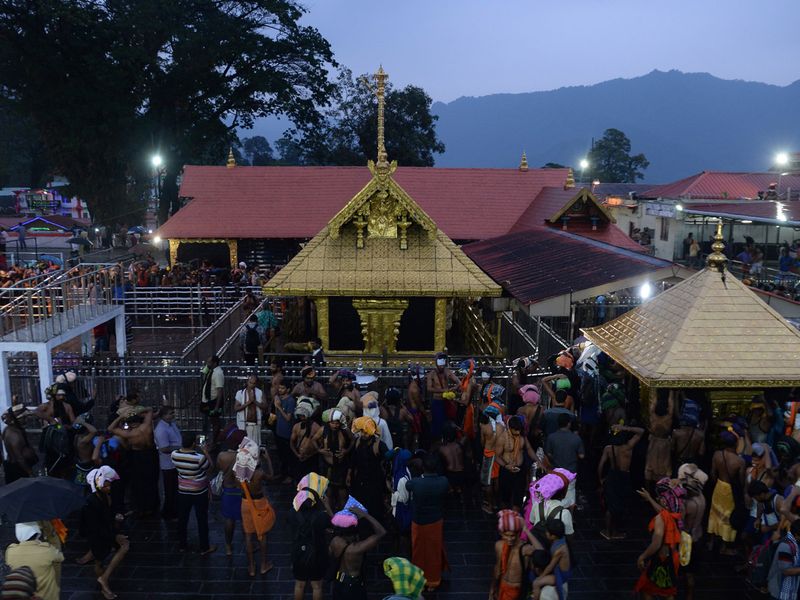
Speaking to the media over telephone, Bindu said she along with Durga reached the Pamba base camp around 1.30 a.m. and along with a few police officers in civilian clothes went up the pathway.
"The government had assured us all help. We reached the base camp and went up the pathway and we had darshan at 3.30 a.m. We, however, did not climb the hallowed 18 steps, instead went through the way normally used by VIPs," said Bindu.
"We did not have any problems. Barring minor protests, there was no other issue," added Bindu.
Rahul Eashwar, a member of the temple tantri family, earlier said that "corrective rituals" would have to be done. He called their entry "most unfortunate".
Industries Minister E.P. Jayarajan said the tantri had no right to close the temple.
"This is a challenge to the judiciary. The government only did its role in upholding the Supreme Court directive," Jayarajan, considered the number two in the cabinet, told journalists.
"This is a victory for women's rights. Women have entered Sabarimala temple earlier too," he added.
Government stance
A local official from Indian Prime Minister Narendra Modi's ruling party called for protests after two women entered a Hindu temple in the southern state of Kerala on Wednesday, defying a centuries-old ban on women of menstruating age entering the shrine.
The Bharatiya Janata Party's (BJP)'s Kerala state president P.S. Sreedharan Pillai called it "a conspiracy by the atheist rulers to destroy the Hindu temples," and said his party will "support the struggles against the destruction of faith by the Communists." "Let all the devotees come forward and protest this," Pillai told local television news channels.

Many Hindu groups as well as Prime Minister Narendra Modi's nationalist Bharatiya Janata Party (BJP) fiercely oppose the court ruling. They argue that the court has ignored their beliefs that the Sabarimala temple's deity Ayyappa was celibate.
Modi's government did not initially react to the women getting into the temple. In an ANI interview on Tuesday, Modi broke his silence on the matter.
When asked about the stark difference on BJP government opinions on Sabarimala and Triple Talaq – issues affecting two religious communities – Modi said, “Many Islamic countries across the world have banned Triple Talaq, so this is not an issue of faith. If it was, then the world’s Islamic countries would allow it. Even in Pakistan, there is a legal ban on this issue – so this is not about faith but about gender equality and social justice. India is secular and we have secular values.
However there are temples in India, temples have their own customs, where men can’t go and men don’t go… In the case of Sabarimala therefore, about the judgment on the entry of women, we need to reevaluate the Supreme Court ruling. It is not something that needs to be attributed to the constitution... there should be a discussion at some point or other about this ruling.”
The state government of Kerala, led by the Communist Party of India (Marxist), has pulled out forces to ensure that the ruling is enforced by giving protection to any woman who wishes to enter the holy shrine.
Protests
Congress leader Ramesh Chennithala in Kerala called for protests against the Left government. "Vijayan will have to pay a heavy price for this," he said. Another Congress leader, K. Sudhakaran, called Vijayan "a fascist" and said the two women who entered the temple were his "puppets".
"These two women are not believers. They are activists. They never went through the customary rituals that any true devotee does before embarking on the pilgrimage. These women did not have the customary holy kit carried by pilgrims," he said.
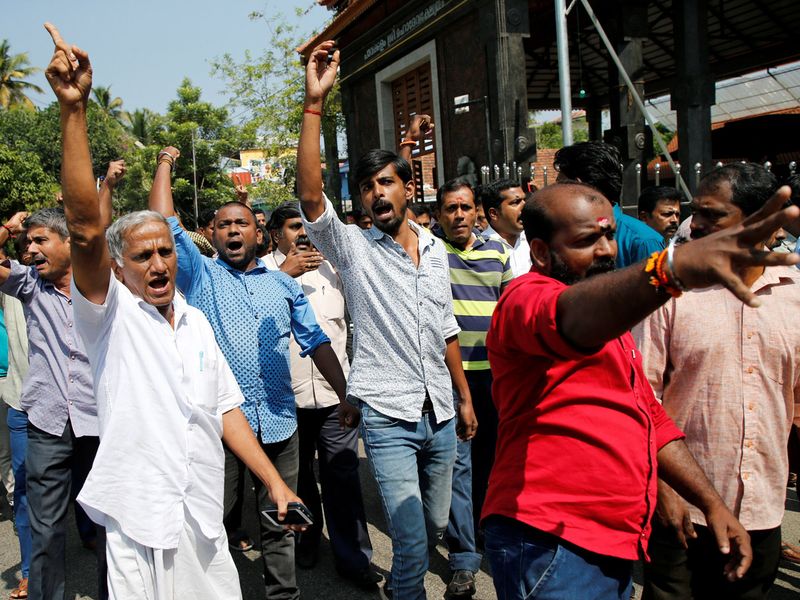
Kerala CPI-M Secretary Kodiyeri Balakrishnan said there was no reason to shut the temple.
"Those who should observe the temple rules are themselves violating it," he said. "The role of the government is to abide by the Supreme Court order and it has done just that. The police did their job of providing security to the women."
The Nair Service Society's General Secretary Sukumaran Nair thanked the temple priests for "closing down the temple. We will now follow the legal route against what has happened".
State BJP General Secretary M.T. Ramesh thundered that Vijayan will have to pay "a heavy price" for violating the temple traditions.
"What they did was to act like cowards. In pitch darkness, they took the two women," he said, adding that protests would be held in Kerala on Wednesday and Thursday.
BJP activists protested in front of Devasom (Temples) Minister Kadakampally Surendran when he came to attend a programme in Guruvayoor. Similar protests took place when Health Minister K.K. Shailaja came for a function at her home district in Kannur.
The controversial ruling
The Supreme Court ruled on September 28 that the decades-old ban on women of menstruating age at Sabarimala, which is at the top of a hill a four-hour trek from the nearest village, was illegal.
The clashes between women activists and hardliner devotees have been going on for months now, the latest on New Year ’s Day when tens of thousands of women formed a human chain across Kerala to back the demand for women's access to the temple. Media reports said some of the women were heckled and stoned by right-wing activists. The Supreme Court is to start hearing a legal challenge to its ruling on January 22.
Women are still barred from a handful of Hindu temples in India. The entry of women at Sabarimala was taboo for generations. In 1991, the Kerala High Court bench restricted the entry of women above the age of 10 and below the age of 50 from Sabarimala Shrine, as they were of the menstruating age.
Essentially, it is this order that the Supreme Court constitution bench had scrapped through its 4-1 judgement, allowing women of all ages the right to enter the temple.
What is Sabarimala and who is Ayyappan?
Sabarimala is one of the most prominent Hindu pilgrimage centres in south India, located in Pathanamthitta District, in the state of Kerala. The temple is open for worship during the 41 days of Mandalapooja (November-December) Makaravilakku (in January) and Vishu Sankranti (April) — and the first five days of each Malayalam month. The gold-plated Sabarimala temple complex sits atop a 3,000-foot (915-metre) hill in a forested tiger reserve.
The shrine witnesses one of the largest annual pilgrimages in the world — with up to 50 million devotees visiting every year. It is also one of the ‘richest’ temples in India in terms of seasonal income. During the festive season last year it has achieved a record income of INR 255 crores or Dh126,140,810.
The legends of Ayyappan
Legend has it that Ayyappa was found abandoned as a baby. A king of the Pandalam dynasty, which still manages the temple operations, found and raised him.
At the age of 12 Ayyappa emerged from the forest riding a tigress. The boy fired an arrow which landed at the site where the temple is now located.
There’s another popular legend associated with the birth of Ayyappan, the deity of Sabarimala shrine. Ayyappan is also called Hari-Hara putra, which literally means “son of Hari” (Vishnu – an important deity in Hindu pantheon) and Hara (Shiva - another important Hindu deity). And these two are male deities.
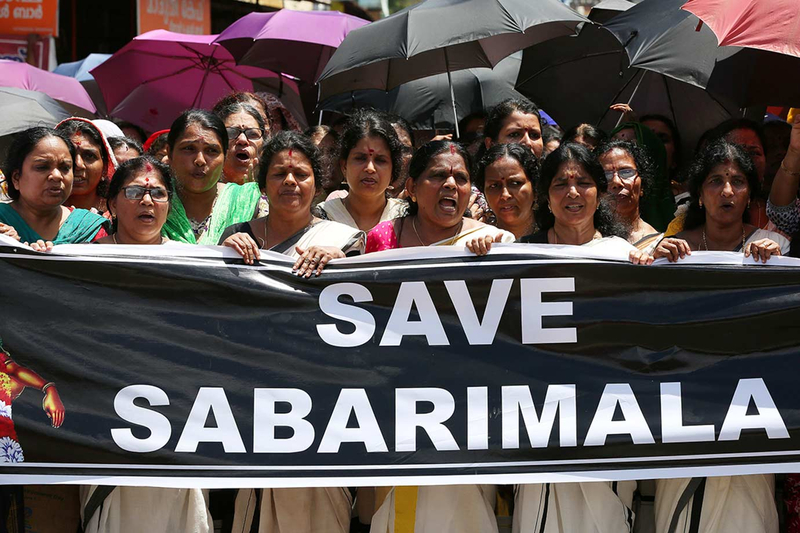
How could Ayyappan be born of two male deities? The story, popular in many South Indian texts, goes like this: In those days, there were constant fights between Devas and Asuras or the gods and demons, but they united once for “Samudra mandhan”, or the churning of the ocean to get Amrit, something like an elixir of immortality.
When the pot containing the elixir emerged from the ocean, the Asuras grabbed it and they wanted to keep it for themselves. Sensing trouble, Vishnu then took the form of Mohini, a gorgeous female enchantress, and tricked Asuras to hand over the pot containing the exilir.
When Shiva came to know about this, he wanted to see the enchantress Mohini. Vishnu assumed the form again and Shiva couldn’t control his desire for Mohini — and Ayyappan (or Shasta) is born out of their union.
The union of Shiva and Vishnu is narrated in the same vein, with additions and subtractions, in various south texts like Bhagavata Purana, Brahmanda Purana and Tripurarahasya.
Was Sabrimala a Buddhist temple?
Sabarimala is the only major temple in Kerala where people from any religion could go freely.
And it’s not because of the Hindu tradition or heritage, but points to the Buddhist connection.
Women were denied entry probably because of the same connection as Buddhist “viharas” were out of bounds for the women in the early days.
Ayyappan is also called “Dharma Shaastaavu” and the word Dharma or Dhamma clearly indicates the Buddhist connection.
Another curious link to Buddhist tradition is the call for Sharanam (a request for protection or help).
During Shabarimala pilgrimage, Ayyappan devotees’ talismanic chant is “Swami Sharanam, Ayyappa Sharanam” and this has obvious roots in Buddhist sharana chants like “Budham Sharanam, Sangham Sharanam”, scholars have pointed out.
The third one is the posture of the deity, it has a close similarity to Buddhist idols.
Noted Kerala academic Sunil P. Ilayidom has commented that the Sabarimala idol is similar to those found in the Gandhara style of Budhdhist art.
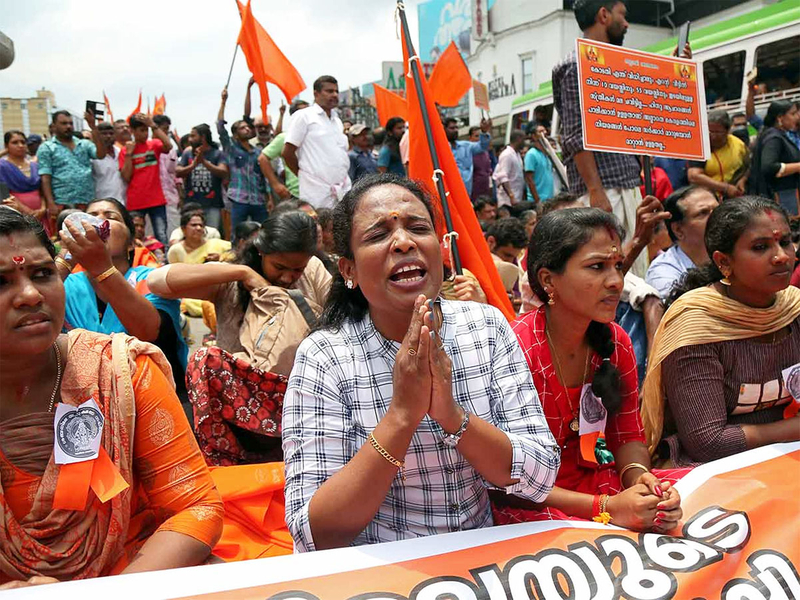
All this point to the strong possibility that Sabarimala could be such Buddhist shrine appropriated by the Hindu mainstream groups from a Buddhist sect.
So whose tradition are they trying to protect now?
Most of the people protesting on the streets and attacking women devotees on social media who want to go to Sabarimala have no idea about any of these — other than what the campaigners have pushed down their throat.
The Tamil connection and Ayyanaar
Ayyappan is also called Shashtavu. Shasta is also identified with the Tamil deity Aiyyanaar. Village temples of Ayyanaar can be seen everywhere in Tamil Nadu. He is considered a guardian of many other folk deities.
The origins of Ayyanaar worship is not very well documented, and some studies have pointed to the Sinhalese and possible Buddhist connection for this deity too. Sinhalese worship him in the name of Ayyanayake, according to scholarly studies.





